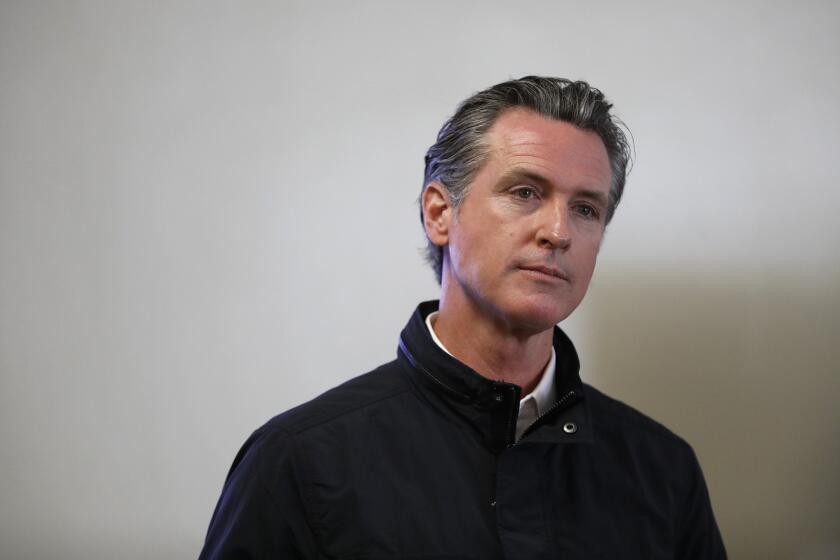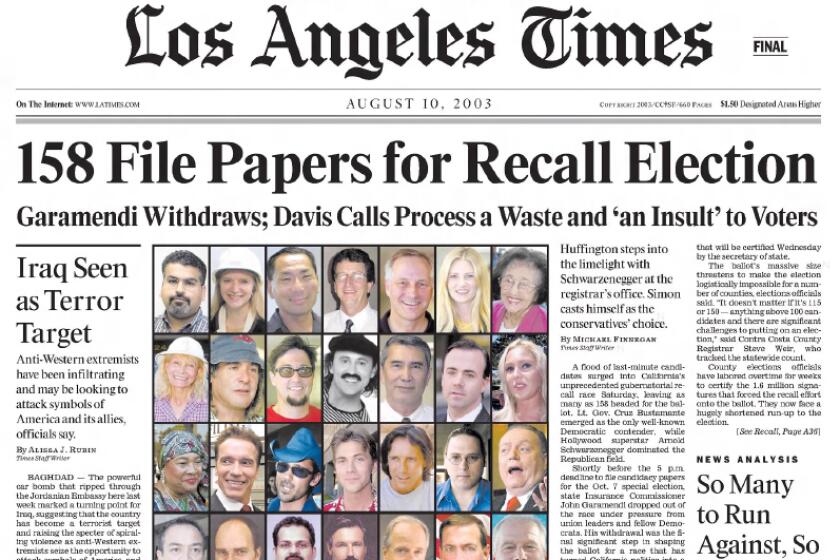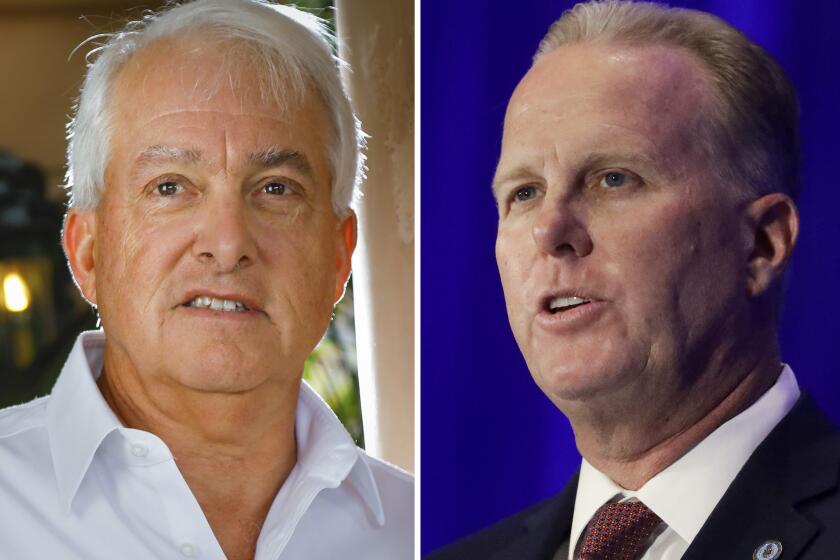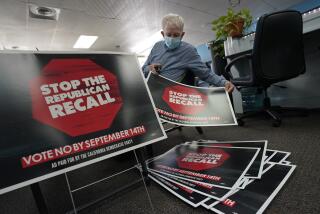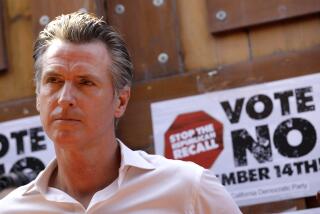Newsom recall election is looking more likely as foes hit signature milestone
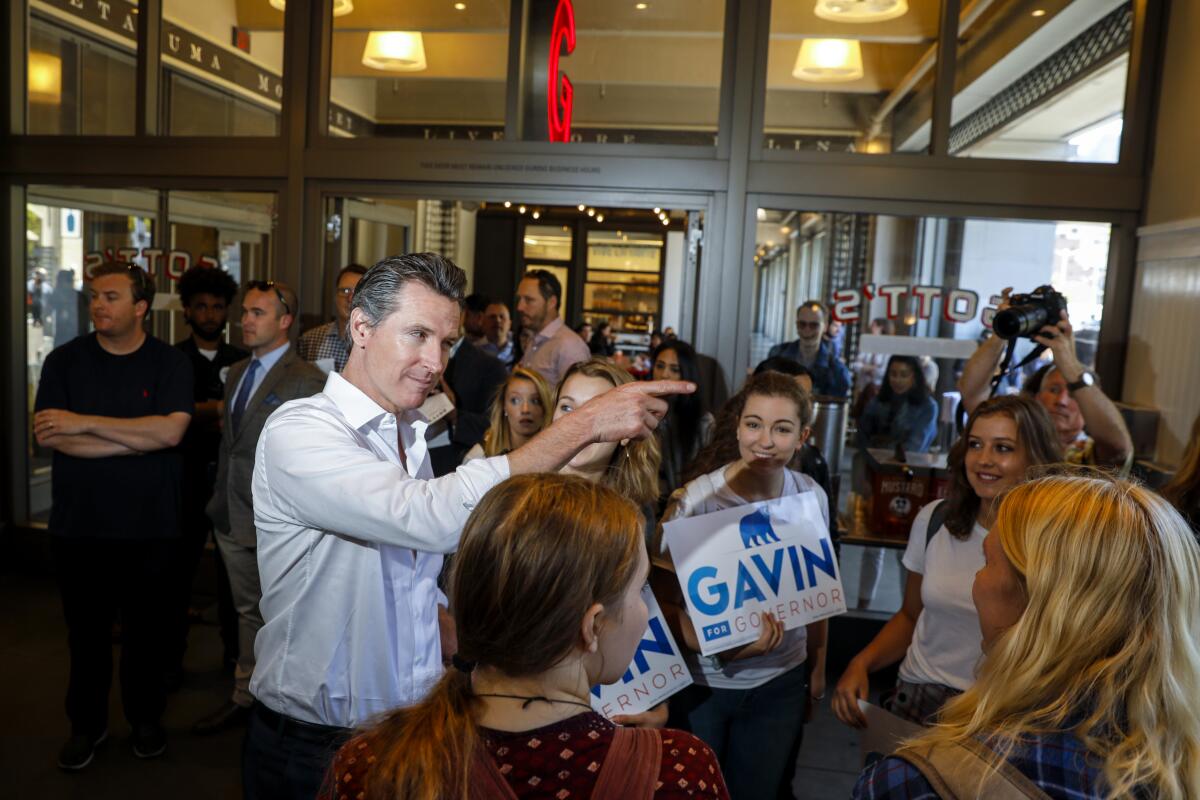
- Share via
SACRAMENTO — The effort to force a recall election for Gov. Gavin Newsom reached another milestone this week, though it will likely be several more weeks before Californians know whether the issue will head to voters this year.
Newsom has faced a political backlash against his handling of coronavirus-related closures and their effects on the economy, one that has fueled an effort led by Republican activists.
Here is where we are now and what we know:
If the recall campaign’s results hold steady from last month — when state officials reported that almost 84% of the initial signatures were valid — there would be more than enough signatures for an election that could oust Newsom.
Where are Newsom critics with signature gathering?
Organizers of the recall effort said this week they have collected more than 2 million signatures on petitions to force a vote later this year.
If the campaign’s results hold steady from last month, when state officials reported that almost 84% of the initial signatures were valid, there would be more than enough certified petitions to trigger an election.
Recall organizers need almost 1.5 million valid voter signatures to qualify the ballot measure, a number equal to 12% of the total votes cast in the 2018 gubernatorial election. Newsom would be the second California governor — and only the fourth in U.S. history — to face a recall election.
About eight years ago, Sacramento resident Marc Valdez threw a most unusual party.
What happens next?
Recall backers said they have already submitted 1.8 million signatures to elections officials and will complete their efforts before Wednesday, the deadline set by a state judge who extended the petition circulation process last year to account for delays caused by the COVID-19 pandemic.
Registrars of voters in California’s 58 counties have until April 29 to finish reviewing the petitions.
If the recall qualifies, when would the election be?
The timing of a recall election depends in large part on the signature-validation process. Once the review is complete, California law allows 30 days for any voters who signed the petition but changed their mind to withdraw their name. State officials then have additional time to review the fiscal impact of holding the election.
The final decision on when to hold a recall election would be left to Lt. Gov. Eleni Kounalakis, who would be required to schedule the contest 60 to 80 days after the final certification of voter signatures.
Former San Diego Mayor Kevin Faulconer, businessman John Cox and right-wing activist Mike Cernovich say they will run for governor if a Newsom recall gets on the ballot.
Who would run to replace Newsom?
Two Republicans who have said they will run in a recall election have blamed Newsom for a number of missteps in managing the state’s response to the pandemic.
Former San Diego Mayor Kevin Faulconer, who has said he will run in either a recall election or in the 2022 gubernatorial election, accused Newsom of “botching the basics” during an interview Wednesday on Fox News.
John Cox, a Republican businessman who lost to Newsom in 2018, said voters who have signed the recall petition want a fresh start.
But should the recall election happen, others are likely to join the race.
In 2003, California voters removed then-Gov. Gray Davis and chose Republican Arnold Schwarzenegger from a list of 135 replacement candidates.
One question remains: Would any Democrats join the field?
The attempted recall of Gov. Gavin Newsom will go before voters on Sept. 14. Here are the details.
Where is the opposition to recall?
Two prominent, politically progressive organizations have launched a campaign to fight the recall effort. The National Union of Healthcare Workers began the effort last month, joined this week by the Courage Campaign. A political action committee in support of their campaign has raised $125,000, with recent contributions from Democratic legislators.
Meanwhile, Newsom’s 2022 reelection committee has more than $20 million on hand, and state law allows him to open a separate recall election campaign account in which he could amass cash with no contribution limits.
Newsom has shied away from directly commenting on the effort to remove him from office before his term expires in January 2023. He hinted at its existence during his State of the State address on Tuesday from Dodger Stadium in Los Angeles, insisting that “California critics” were “promoting political power grabs and outdated prejudices” about the state’s residents.
More than a third of the state’s registered voters said they would vote to oust Newsom from office if the recall qualifies for the ballot, though 45% said they would oppose such a move in a February poll conducted by UC Berkeley’s Institute of Governmental Studies.
The poll found 36% of registered voters support a recall of Newsom, but the effort was backed by only 11% of Democrats. Thirty-two percent of unaffiliated voters surveyed said they would support a recall of the governor.
More to Read
Sign up for Essential California
The most important California stories and recommendations in your inbox every morning.
You may occasionally receive promotional content from the Los Angeles Times.
